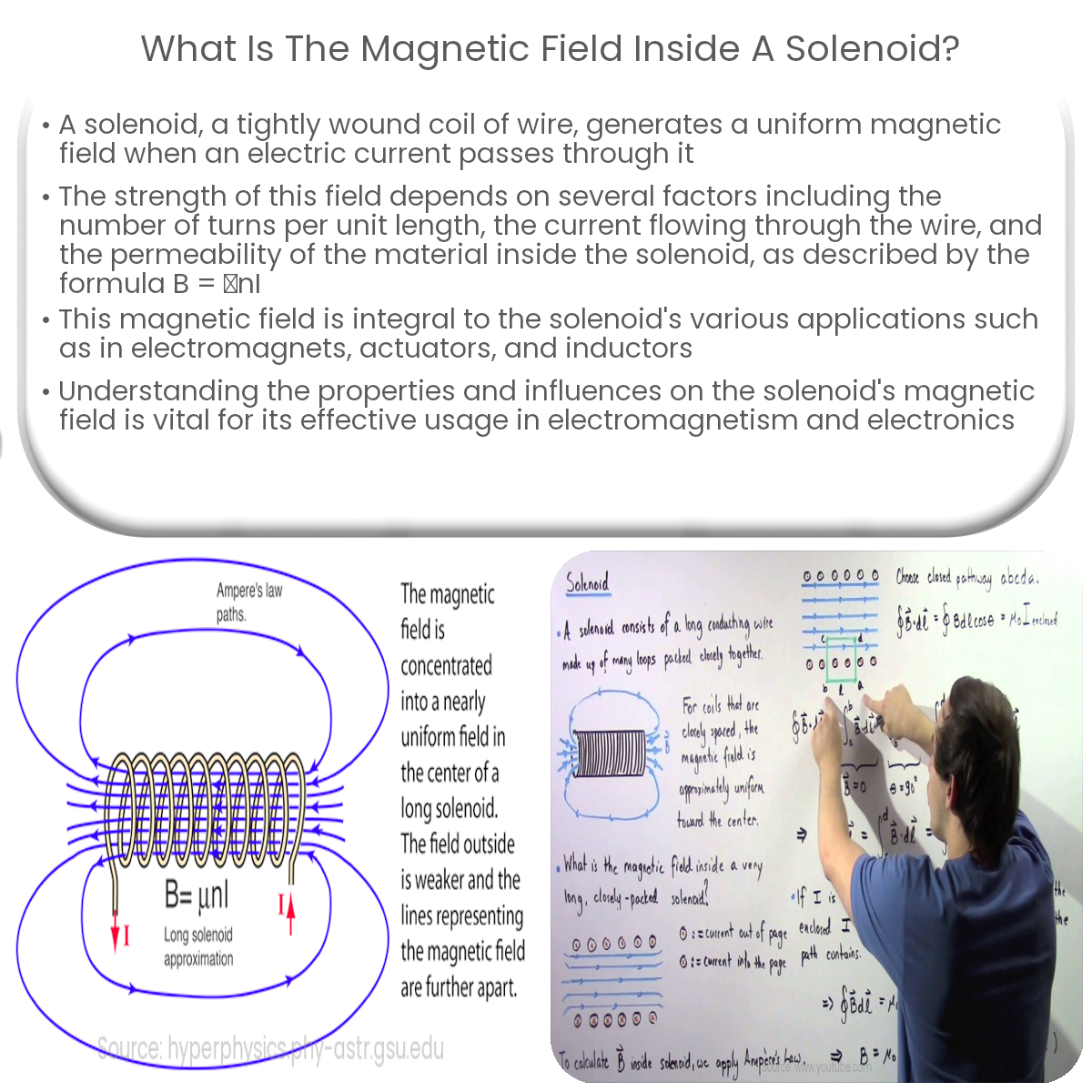The magnetic field inside a solenoid is uniform and parallel to the axis, with strength determined by the coil’s turns, current, and material permeability.
Understanding the Magnetic Field Inside a Solenoid
A solenoid is a tightly wound coil of wire that produces a magnetic field when an electric current passes through it. The magnetic field inside a solenoid is an essential aspect of its functionality and has a variety of applications in electromagnetism and electronics. In this article, we will discuss the properties of the magnetic field inside a solenoid and its significance.
Magnetic Field Inside a Solenoid
The magnetic field inside a solenoid is characterized by its uniformity and strength, which depend on several factors. These factors include the number of turns per unit length (n) of the solenoid, the current flowing through the wire (I), and the permeability of the material within the solenoid (μ). The magnetic field strength inside a solenoid is given by the formula:
B = μnI
Where B represents the magnetic field strength, μ is the permeability of the material, n is the number of turns per unit length, and I is the current flowing through the wire. In an ideal solenoid, the magnetic field is uniform and parallel to the axis of the coil. This means that the field lines are straight and equally spaced within the solenoid.
Factors Affecting the Magnetic Field
As mentioned earlier, the magnetic field inside a solenoid depends on the number of turns per unit length, the current flowing through the wire, and the permeability of the material. A higher number of turns per unit length will result in a stronger magnetic field. Similarly, an increase in current will also lead to an increase in the magnetic field strength. Finally, the permeability of the material within the solenoid also plays a crucial role in determining the strength of the magnetic field.
Applications of Solenoids
Solenoids have various applications due to their ability to generate uniform magnetic fields. Some common applications include:
- Electromagnets: Solenoids are used to create electromagnets, which are devices that generate a magnetic field when current is applied. Electromagnets are widely used in industries for lifting heavy objects and in switches and relays.
- Actuators: Solenoids are used as actuators in various devices, such as door locks and valves, where the magnetic field generated by the solenoid causes a mechanical movement.
- Inductors: Solenoids are used as inductors in electrical circuits, where their magnetic field stores energy and opposes changes in current, helping to regulate voltage and filter electrical noise.
In conclusion, the magnetic field inside a solenoid is a crucial aspect of its operation and has numerous applications in electromagnetism and electronics. Understanding the factors that influence the magnetic field inside a solenoid and its properties is essential for designing and utilizing these versatile components in various devices and systems.


